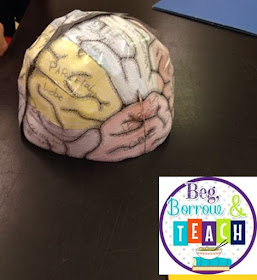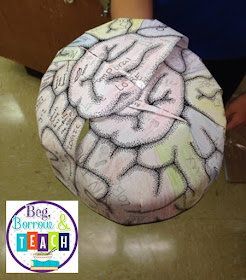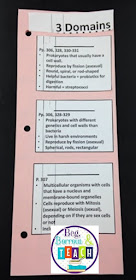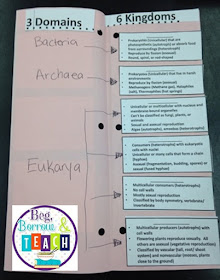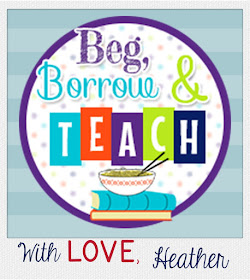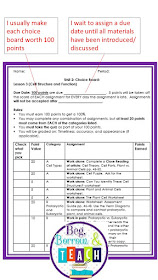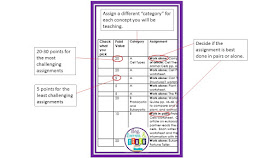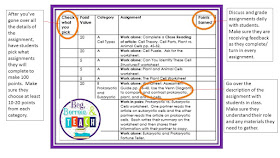Would you like to give your students a choice in what type of activities they complete while still covering all the content material? Then you need to check out
Differentiating Instruction With Menus by Laurie E. Westphal. I'm not kidding when I say that this book completely changed the way I teach in the best way!
Practically every grade level and subject have their own menu book, ranging from K-12. Below are only a
few of the examples.
Here's the one I want to check out next.
I have a basic template that I've created for the choice boards/menus, based off of Differentiating Instruction With Menus. It's a little different than the ones in the book, so you will still want to check out the book to figure out what works best for you.
The first things I decide are:
How many lessons/concepts will the board cover?
1-3, maximum. Choice boards/menus work best with fewer concepts.
How many points will the board be worth?
I usually make all mine 100 points/percent, because they are considered a major project.
Gather/Copy all those unit materials that I've collected over the years: Close Reading articles, worksheets, labs, PowerPoints, webquests, online games, etc.
I choose them based on how well they cover the concepts and their level of challenge (I want a range of challenge, from worksheets that practically answer themselves to projects that require much more creative thinking.
When will the entire menu be due?
I wait until I've introduced all materials before setting a due date. I'll teach a mini lesson each day, introduce some more materials, and let students start choosing assignments/gathering materials before setting the date.
Once I've chosen all the unit materials, I assign a point value to each assignment, based on the level of challenge.
For example, a 10-question fill-in-the-blank worksheet with a word bank might be worth 5 points, while a 4-page article for which students must use Close Reading annotations would be worth 20 points.
Next, I decide whether an activity will be "work alone" or "work in pairs" for each assignment.
5-point worksheets are best done individually, while a major poster project might be better assigned to pairs. I always give students the option of working alone, even if it says "work in pairs". While one of the goals is certainly to encourage collaboration, some students really do produce the best results when working independently. I also tell students that they may only work with a particular classmate once on each choice board, since I want them to work with a variety of people.
Finally, I assign a different "category" for each concept or lesson I will be teaching.
For example, cell types (plant and animal) would be Category A, while prokaryotic and eukaryotic cells would be Category B. This is important because I specify that at least 10-20 points must come from each category. That way, I know students have spent the right amount of time learning each of the concepts.
The Final Steps
Make sure the class understand what each assignment entails and what materials they will be responsible for gathering on their own. I always introduce each assignment to the whole class. That way, students are free to change their minds if one assignment isn't working out for them and they need to switch to a different assignment. Sometimes I will ask students to bring in materials on their own if they choose a particular assignment. Modeling clay, for example, for building a cell model. The reason I do this is because I can't go buy clay in bulk if only a handful of students choose to build a cell. It makes more sense for them to buy it if they want to use it than for me to try to guess.
After I've gone over the expectations for each assignment and answered all questions, I have students put check marks beside what they plan to complete. It's at this time that I check to make sure they are choosing assignments from each of the categories listed. I have a requirement that each student needs to complete 10-20 points from each category. That way, I know they get the proper practice with each concept.
Finally, I check students' progress each day and I grade each assignment as it is completed. It's AMAZING how much more I'm able to interact with EACH student every day while they are working on choice boards. The majority of the work is done in class, but if a student is not producing at a steady rate, they may need to take it home to complete.
I hope it's clear how much I love using choice boards! I don't feel like I can adequately express how much it helps both me and my students.
Do you use choice boards? Do you plan to use them? I'd love to hear about your ideas!

